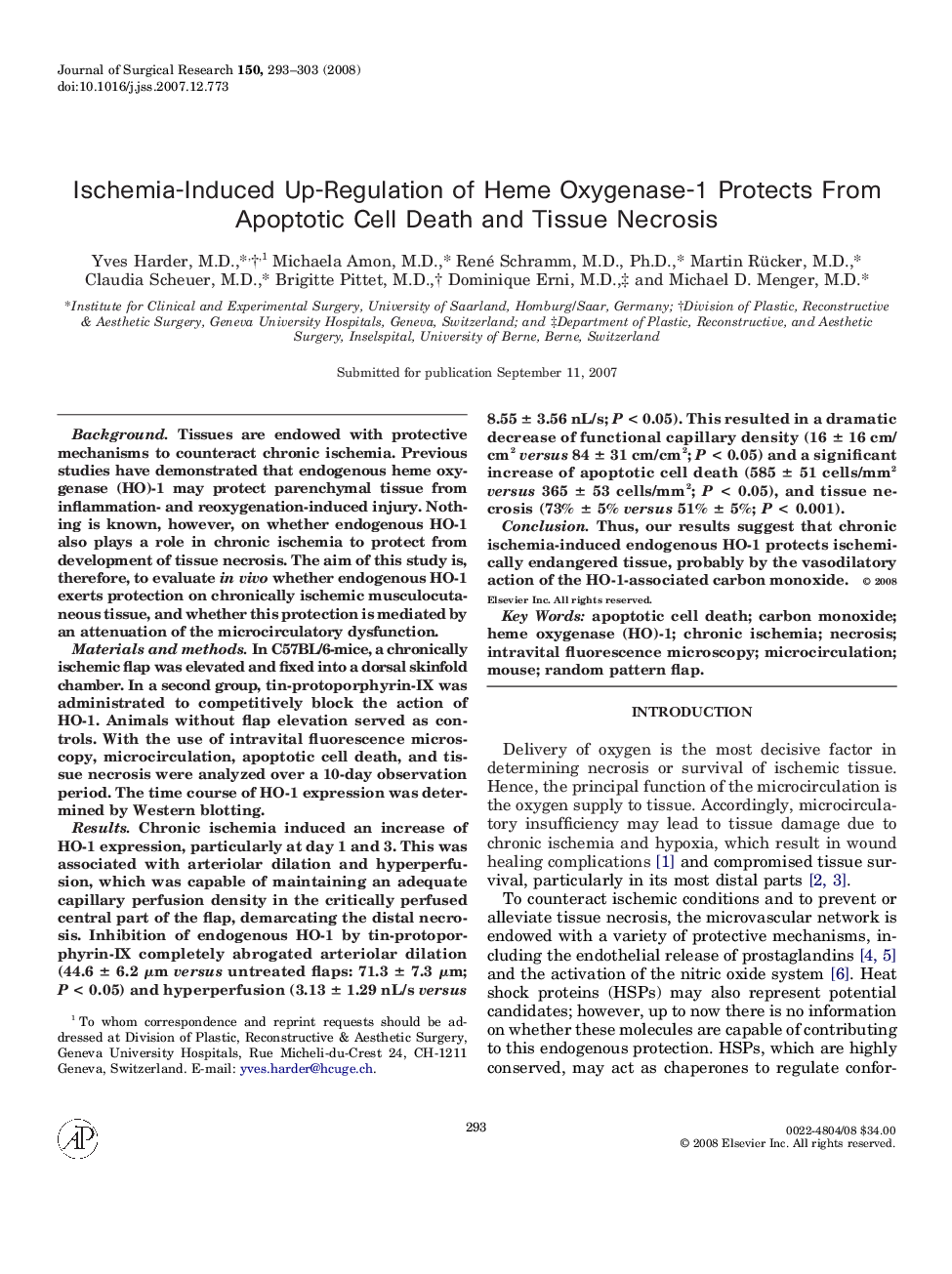| Article ID | Journal | Published Year | Pages | File Type |
|---|---|---|---|---|
| 4303369 | Journal of Surgical Research | 2008 | 11 Pages |
BackgroundTissues are endowed with protective mechanisms to counteract chronic ischemia. Previous studies have demonstrated that endogenous heme oxygenase (HO)-1 may protect parenchymal tissue from inflammation- and reoxygenation-induced injury. Nothing is known, however, on whether endogenous HO-1 also plays a role in chronic ischemia to protect from development of tissue necrosis. The aim of this study is, therefore, to evaluate in vivo whether endogenous HO-1 exerts protection on chronically ischemic musculocutaneous tissue, and whether this protection is mediated by an attenuation of the microcirculatory dysfunction.Materials and methodsIn C57BL/6-mice, a chronically ischemic flap was elevated and fixed into a dorsal skinfold chamber. In a second group, tin-protoporphyrin-IX was administrated to competitively block the action of HO-1. Animals without flap elevation served as controls. With the use of intravital fluorescence microscopy, microcirculation, apoptotic cell death, and tissue necrosis were analyzed over a 10-day observation period. The time course of HO-1 expression was determined by Western blotting.ResultsChronic ischemia induced an increase of HO-1 expression, particularly at day 1 and 3. This was associated with arteriolar dilation and hyperperfusion, which was capable of maintaining an adequate capillary perfusion density in the critically perfused central part of the flap, demarcating the distal necrosis. Inhibition of endogenous HO-1 by tin-protoporphyrin-IX completely abrogated arteriolar dilation (44.6 ± 6.2 μm versus untreated flaps: 71.3 ± 7.3 μm; P < 0.05) and hyperperfusion (3.13 ± 1.29 nL/s versus 8.55 ± 3.56 nL/s; P < 0.05). This resulted in a dramatic decrease of functional capillary density (16 ± 16 cm/cm2versus 84 ± 31 cm/cm2; P < 0.05) and a significant increase of apoptotic cell death (585 ± 51 cells/mm2versus 365 ± 53 cells/mm2; P < 0.05), and tissue necrosis (73% ± 5% versus 51% ± 5%; P < 0.001).ConclusionThus, our results suggest that chronic ischemia-induced endogenous HO-1 protects ischemically endangered tissue, probably by the vasodilatory action of the HO-1-associated carbon monoxide.
